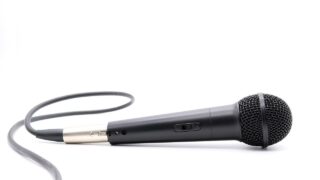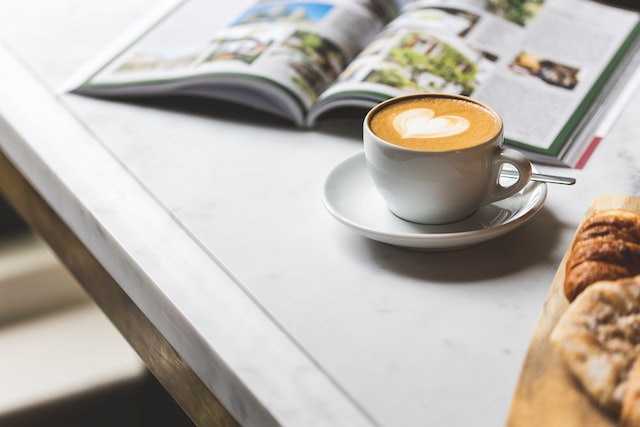ライフハックとしてではなく、英語学習にも極めて有用なのが、著名人が10分程度のプレゼンを行うTEDです。
TED Talksとは、あらゆる分野のエキスパートたちによるプレゼンテーションを無料で視聴できる動画配信サービスのことです。10年ほど前にサービスが開始されてから、政治、心理学、経済、日常生活などの幅広いコンテンツが視聴できることから人気を集めています。
RareJob English Lab
TEDは4000を超える膨大な数の動画があります。しかし慣れないうちは、動画の探し方や視聴のコツが分かりませんよね。この記事では、数多くのTEDを見てきた管理人(塩@saltandshio)が、心を揺さぶられたトークをあらすじと一緒にご紹介します。
ビジネス英会話を効率よく身につけたい方におすすめスクール
シェーン英会話
シェーンは1977年の創業以来、ネイティブ講師が英語を英語で教える「直接教授法」を採用しています。首都圏におけるスクール拠点数は、ネイティブ講師の英会話スクールでNo.1。駅から近いスクールが多いので通いやすく時間を有効に使えます。
スピークバディ パーソナルコーチング
1日1時間の短期集中トレーニングで、あなたの英語力向上をコーチが全力でサポートします。あなたの英語の世界が、劇的に変わります。
A・J・ジェイコブズ:紙コップの蓋の進化について
紙コップの蓋がいかにコーヒーを飲む体験を五感に強く訴えるものにできるよう完璧に設計されているかについて、作家のA・J・ジェイコブズが教えてくれます(約3分)。
紙コップの蓋は情熱の結晶
出勤中に、ランチのあとに、ドライブ中に、おでかけした時にと、私たちは何気なくお店でコーヒーを買って飲んでいます。そのときに、中身がこぼれないように蓋を付けますが、この蓋に注目しながら過ごしている人はどれほどいるでしょうか。
隙間なくパチッとハマり、飲むときにも喉へと一気に入り込まないようにデザインされている紙コップの蓋。もはやそれが当たり前だと感じている紙コップの蓋ですが、これがどれほど素晴らしいことか考えた人はあまりいないでしょう。それほどに素晴らしいアイデアが凝縮された逸品、それが紙コップの蓋なのです。
紙コップの蓋を語るときは独自の用語が使われます。「周縁スカート」とか、「押し込みディンプル」とか、「香りの出口」とか、「液漏れ因子」とかね。こんな語彙が必要なのは、この蓋には多くの考えや画期的な着想が込められているからです。
People talk about the “peripheral skirts,” the “press-in dimples,” the “fragrance outlets,” the “slosh factor.” But you need these words, because so much thought and innovation goes into these coffee cup lids.
世界に何十億と存在しているコーヒーカップの蓋。この小さな円盤ひとつに注ぎ込まれたデザインと情熱と創造性には、とても驚かされます。
紙コップの蓋の歴史
それほど世界に大量に流通している紙コップの蓋ですが、じつは短所があります。歩きながらだと、コーヒーを味わいながら飲むのが難しいという点です。紙コップの蓋の歴史は、この短所をいかにクリアしていくかという、試行錯誤の歴史ともいえるでしょう。
最初に、紙コップの蓋の特許が取られたのは1934年。冷たい飲み物専用の蓋として、ジェームズ・ラフスナイダーが特許を取りましたが、この時の蓋には飲み口がありませんでした。なぜなら、この時はただ中身がこぼれなければよかったからです。
その後、1960年代に入ると生活様式が大きく変わり、移動中にも人々がコーヒーを飲むようになります。コンビニエンスストア大手のセブンイレブンが、初の持ち帰りコーヒーを販売するようになったのもこの頃で、それと並行して蓋の仕様も大きく変化していきます。
- 1967年:アラン・フランクが飲み口のタブを開けられる蓋を開発
- 1975年:開けたタブを固定できる蓋が出来る
- 1984年:トラベラー・リッドの誕生
これ(トラベラー・リッド)は、たくさんの問題を解決してくれました。飲むときに顔にかからないように設計されています。他の蓋よりも高さがあるからです。
And it is iconic — you’ve seen it a million times. And it solved a whole host of problems. It’s designed so that you don’t splash your face, because it’s higher than any of the other ones.
ほかにも、トラベラー・リッドはへりが出っ張っているので、唇に到達するまでにコーヒーを少し冷ましてくれるという特徴があります。さらにこの蓋の素晴らしいところは、中央に鼻に合わせたくぼみがあるので、香りを最大限に楽しむことができることです。加えて、小さな空気孔から蒸気を逃がしてくれるので、真空状態にならないようにしてくれています。
今やお店やコンビニエンスストアで販売されている持ち帰り用のコーヒーは、倒してパソコンにかけてしまったり、誤って衣類にかからない限り、香りも味も楽しめる飲める嗜好品となりました。それは、紙コップの蓋の進化のおかげともいえるでしょう。
まとめ:紙コップの蓋はこれからも進化し続ける
コーヒーの紙コップの蓋は進化を続けるでしょう。使い捨てプラスチックの蓋を見ることは少なくなって、もっと持続可能なものに代わるでしょう。
So I think the coffee cup lid will just continue to evolve, and you’re going to see a move away from single-use plastic lids to lids that are a little more sustainable.
人々が移動することをやめない限り、コーヒーはこれからも人々に飲まれ続けます。コーヒーカップの蓋を作っているエンジニアたちの目標は、そんな移動中に飲まれるコーヒーが、レストランで飲んでいるコーヒーのように優雅で落ち着いた時間に変えさせることかもしれません。
どうでしょう、紙コップの蓋を改めて見てみたくなりませんか。
英語全文
You never give it any thought, and there are billions of them out there, but the amount of design and passion and creativity that goes into this little disc is remarkable.
<全文を読む>▼クリック▼
Coffee cup lids have their own vocabulary. People talk about the “peripheral skirts,” the “press-in dimples,” the “fragrance outlets,” the “slosh factor.” But you need these words, because so much thought and innovation goes into these coffee cup lids.
Our society is just more and more mobile. Everything is on the move. The good part: it’s convenient. You can drink coffee anywhere, you don’t have the stay in the diner. It can be in the subway. You can be walking. The bad part is, it’s harder to savor a coffee when you’re taking it on the road.
The first patent for a lid on a cup was in 1934, but it was for cold beverages. And in 1950, this guy named James Reifsnyder invented the first snap-on lid. But it didn’t have an opening for drinking.
In the ’60s there was this huge cultural shift, where people started drinking coffee on the move. And 7-Eleven was the first to sell coffee to go. And then came this revolution in 1967. A man named Alan Frank invented a lid that you could peel a tab off, like in the shape of a guitar pick, and drink it from there. In 1975, another big advance: you could peel back a tab and attach it to the lid itself. So, more and more people started drinking coffee on the go.
In 1984, a watershed moment in the history of coffee cup lids: the birth of the traveler lid. And it is iconic — you’ve seen it a million times. And it solved a whole host of problems. It’s designed so that you don’t splash your face, because it’s higher than any of the other ones. And it’s got this protruding rim, so it slightly cools the coffee before it hits your lips. It’s got a small depression in the center for your nose, so you can really get in there and get maximum aroma. It’s got this tiny air hole that lets the steam out and stops it from creating a vacuum.
This is one of those objects where you just don’t notice it until it dribbles on your lap. So I think the coffee cup lid will just continue to evolve, and you’re going to see a move away from single-use plastic lids to lids that are a little more sustainable. We’re not going to stop moving. We’re not going to stop drinking coffee. And I think that’s what these coffee lid engineers are trying to do, is to make it so that the experience of taking it on the road is as good as sitting in a restaurant, drinking from a ceramic cup. Because, you know, coffee is serious business.
<閉じる>
\ ほかにも気になるトークが満載! /








